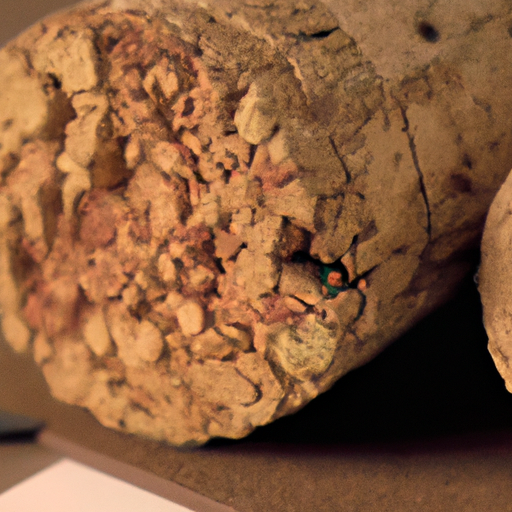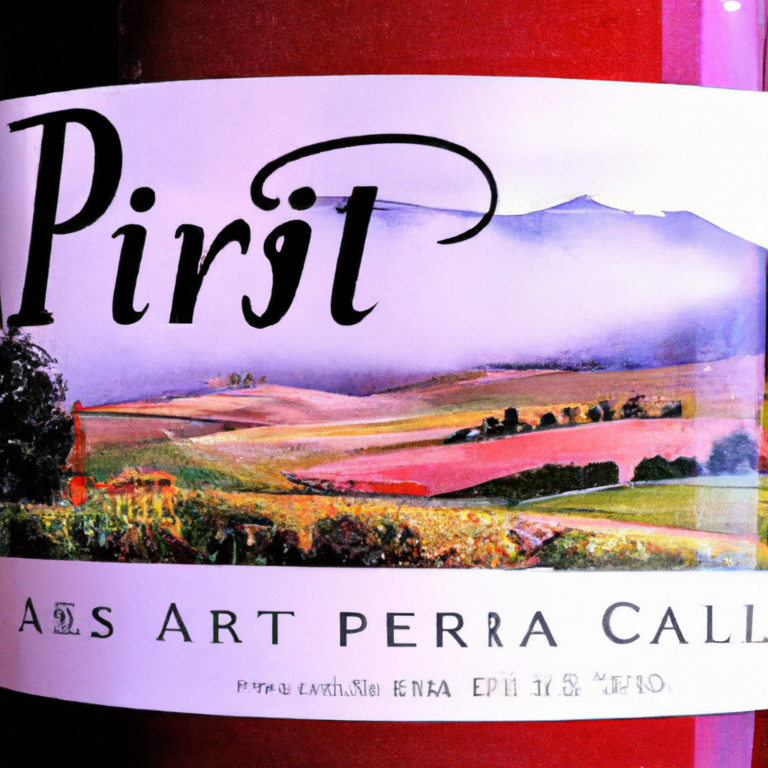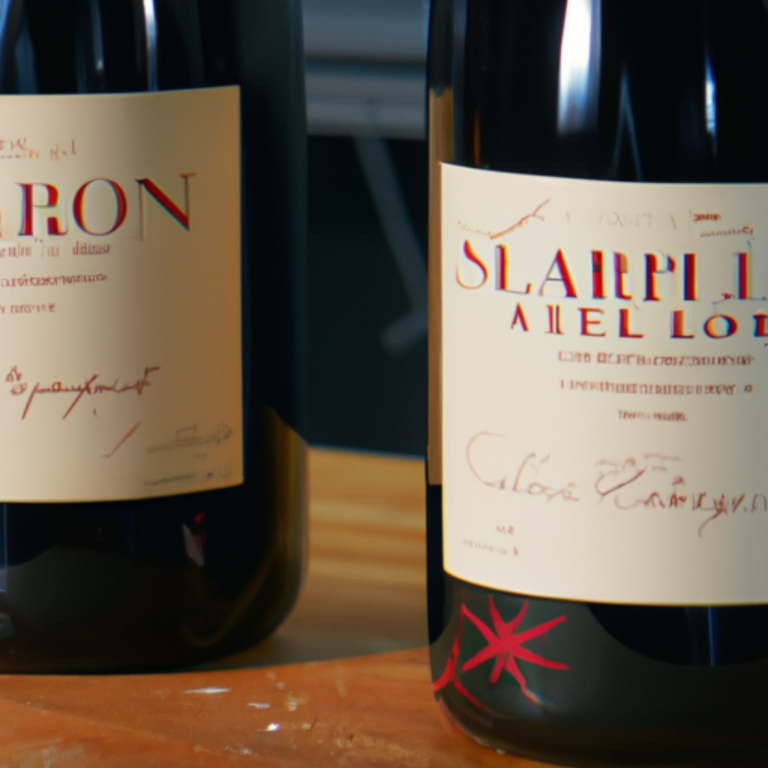A Comprehensive Guide to Understanding Cork Taint
What is Cork Taint and How Does it Affect Wine?
Cork taint is a term that is often thrown around in the world of wine, but what exactly does it mean? In simple terms, cork taint refers to a fault in wine caused by a compound called 2,4,6-trichloroanisole (TCA). This compound can be found in natural cork closures and can have a significant impact on the taste and aroma of the wine.
TCA is formed when certain fungi come into contact with chlorine compounds that are sometimes used in the production of cork. These fungi can be present in the cork bark or in the winery environment itself. When TCA is present in a wine, it can give off a musty, moldy odor that is often described as smelling like wet cardboard or a damp basement. This unpleasant aroma can completely mask the natural aromas and flavors of the wine, rendering it undrinkable.
The impact of cork taint on a wine can vary greatly. In some cases, the taint may be so subtle that it is barely noticeable, while in others, it can completely ruin the wine. The sensitivity to TCA can also vary from person to person, with some individuals being more sensitive to the compound than others. This means that one person may detect cork taint in a wine while another may not.
Cork taint is not limited to just natural cork closures. It can also be found in wines sealed with synthetic corks or screw caps, although the incidence is much lower. This is because TCA is primarily formed in the cork itself, so wines sealed with alternative closures have a lower risk of being affected. However, it is important to note that alternative closures come with their own set of advantages and disadvantages, and the choice of closure is often a matter of personal preference and the specific needs of the wine.
Detecting cork taint can be a challenge, especially for those who are not familiar with the aroma. However, there are a few telltale signs that can indicate the presence of TCA. The most obvious is the musty, moldy smell mentioned earlier. If you detect this aroma in a wine, it is likely that it is affected by cork taint. Another sign to look out for is a lack of fruitiness or intensity in the wine’s aroma and flavor. Cork taint can mask the natural aromas and flavors of the wine, leaving it dull and lifeless on the palate.
If you suspect that a wine is affected by cork taint, it is best to consult with a wine professional or sommelier. They will be able to confirm whether or not the wine is indeed tainted and can guide you on the appropriate course of action. In some cases, the wine may be replaced or refunded, depending on the retailer’s policy.
In conclusion, cork taint is a fault in wine caused by a compound called TCA. It can have a significant impact on the taste and aroma of the wine, rendering it undrinkable. While cork taint is primarily associated with natural cork closures, it can also be found in wines sealed with alternative closures, although the incidence is much lower. Detecting cork taint can be challenging, but there are signs to look out for. If you suspect a wine is affected, it is best to consult with a wine professional.
Identifying and Preventing Cork Taint in Wine Production

Cork taint is a common problem in the wine industry that can greatly affect the quality and taste of the final product. It is caused by a compound called 2,4,6-trichloroanisole (TCA), which is formed when certain fungi interact with chlorine compounds used in the production of cork stoppers. In this section, we will explore how to identify and prevent cork taint in wine production.
Identifying cork taint can be challenging, as it is not always immediately apparent. However, there are some telltale signs that can help you determine if a wine is affected. The most common indicator is a musty or moldy smell, often described as resembling wet cardboard or a damp basement. This odor can be quite strong and overpowering, making it difficult to enjoy the wine. In some cases, the taste of the wine may also be affected, resulting in a flat or muted flavor profile.
To prevent cork taint in wine production, it is crucial to understand the factors that contribute to its development. One of the main culprits is the presence of chlorine compounds in the winery environment. These compounds can come from a variety of sources, including cleaning agents, sanitizers, and even water used in the production process. It is essential to ensure that all equipment and surfaces are thoroughly cleaned and sanitized to minimize the risk of contamination.
Another important factor to consider is the quality of the cork stoppers used. Cork taint can occur when the cork bark is contaminated with TCA-producing fungi. To mitigate this risk, winemakers should work closely with their cork suppliers to ensure that the corks are properly processed and stored. This includes using effective cleaning and sterilization methods to eliminate any potential sources of contamination.
In recent years, alternative closures such as screw caps and synthetic corks have gained popularity as a way to prevent cork taint. These closures offer a more reliable seal and eliminate the risk of TCA contamination. However, it is worth noting that traditional cork stoppers still have their merits, as they allow for controlled oxygen exchange during aging, which can enhance the wine’s development.
Regular testing and monitoring are essential in preventing cork taint. Wineries should implement a comprehensive quality control program that includes sensory evaluation and chemical analysis of the finished wines. This can help identify any potential issues early on and allow for corrective measures to be taken.
In conclusion, cork taint is a significant concern in the wine industry, as it can greatly impact the quality and enjoyment of the final product. By understanding the factors that contribute to its development and implementing preventive measures, winemakers can minimize the risk of cork taint. Regular testing and monitoring are crucial to ensure that the wines meet the highest standards of quality. While alternative closures offer a viable solution, traditional cork stoppers still have their place in the industry. Ultimately, the goal is to provide consumers with wines that are free from any off-flavors or aromas, allowing them to fully appreciate the unique characteristics of each bottle.
Exploring Alternative Closures to Avoid Cork Taint in Wine Bottles
Exploring Alternative Closures to Avoid Cork Taint in Wine Bottles
Cork taint is a term that every wine enthusiast dreads. It refers to a musty, moldy smell and taste that can ruin the experience of drinking a fine wine. This unpleasant characteristic is caused by a compound called 2,4,6-trichloroanisole (TCA), which can be found in natural cork closures. As a result, winemakers and consumers alike have been searching for alternative closures to avoid cork taint and preserve the quality of their wines.
One popular alternative to natural cork closures is the synthetic cork. Made from materials such as plastic or silicone, synthetic corks offer a consistent and reliable seal that eliminates the risk of cork taint. These closures are also less prone to crumbling or breaking, making them easier to remove and reseal. However, some wine purists argue that synthetic corks can affect the aging process of the wine, as they do not allow for the same micro-oxygenation that natural corks provide.
Another option gaining popularity is the screw cap closure. Originally associated with lower-quality wines, screw caps have come a long way in recent years and are now widely accepted for premium wines. These closures provide an airtight seal, preventing any contact between the wine and the outside air. This eliminates the risk of cork taint and allows for consistent aging and flavor development. Additionally, screw caps are easy to open and reseal, making them convenient for both winemakers and consumers.
For those who still prefer the traditional look and feel of natural cork, there is an alternative known as the technical cork. These closures are made from small pieces of cork that have been glued together, eliminating the risk of cork taint. Technical corks offer a compromise between the natural and synthetic options, providing a traditional appearance while ensuring a reliable seal. However, it is worth noting that technical corks can still be prone to crumbling or breaking, which may require extra care when opening the bottle.
In recent years, a new closure has emerged as a potential solution to cork taint: the glass stopper. Made from high-quality glass, these closures offer an elegant and modern alternative to traditional corks. Glass stoppers provide an airtight seal, preventing any contact between the wine and the outside air. They are also easy to remove and reseal, making them convenient for both winemakers and consumers. However, glass stoppers can be more expensive than other closure options, which may limit their use to higher-end wines.
Ultimately, the choice of closure depends on the preferences of the winemaker and the desired characteristics of the wine. While natural cork closures have a long-standing tradition in the wine industry, the risk of cork taint has led many to explore alternative options. Synthetic corks, screw caps, technical corks, and glass stoppers all offer their own advantages and disadvantages. It is important for winemakers and consumers to weigh these factors and make an informed decision based on the specific needs of their wines.
In conclusion, understanding cork taint and exploring alternative closures is crucial for preserving the quality of wines. Synthetic corks, screw caps, technical corks, and glass stoppers all offer viable solutions to avoid cork taint. Each closure option has its own unique characteristics and considerations, and it is up to winemakers and consumers to choose the best option for their wines. By embracing these alternatives, we can ensure that every bottle of wine is enjoyed to its fullest potential, free from the unpleasant effects of cork taint.






